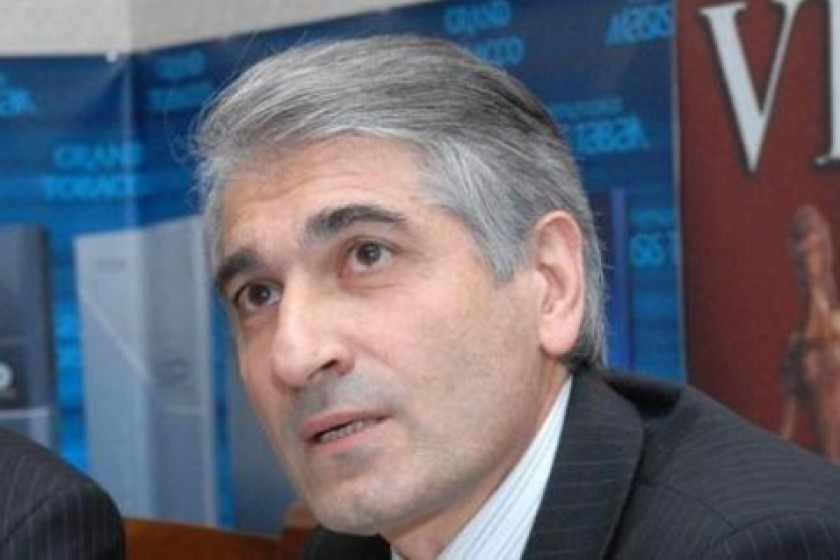
Armenia’s Economy 2015 and EEU Implications
Gagik Makaryan
Executive Director of the Republican Union of Employers of Armenia (RUEA)
Partner expert of the Armenian Institute of International and Security Affairs (AIISA)
INTRODUCTION
Amid political and economic turbulences of recent years Armenia strives to maintain some balanced status enabling its integration possibilities and cooperation with various economic unions. Following this policy and with hope to exclude extra political and economic impacts, Armenia announced on its intention of engagement with the Customs Union 3 September 2013, at the same time expressing willingness to continue economic cooperation with EU and processes started years before.
ON ARMENIA’S ECONOMIC SITUATION
In the period of January-November 2015 Economic Activity Index (EAI) comprised 102.9%. All major fields of Armenia’s economy contributed to EAI growth, except construction and trade, where indices declined respectively by 3.1% and 7.1%. Obviously, it’s reasonable to conclude that trade index reduction is conditioned by 4 main reasons:
- Decrease in population number due to migration;
- Decline in population purchasing capacity, resulted by reduction of foreign private transfers, which, in January-November 2015 as compared to the same period of the previous year, has gone down by 37.2%. In the meantime volume of transfers from Russia decreased by 43.4%;
- Still high level of population poverty comprising 30% by official data, while some analysts argue of it’s being 60% in regional cities;
- Unequal conditions of competition for SMEs and micro companies, leading to stagnation of main economic fields.
It’s noteworthy, that the following main economic dimensions assisted in Armenia’s EAI growth.
1. Industry
Industrial growth comprised 4.6% due to mining industry and exploitation of open cast mines—about 47% with rather high ratio in industry—about 21%. In addition, growth was recorded in the fields of energy, gas and water supply, and sewerage, waste management and treatment, accordingly 4.5% and 10.4%. Growth in these three branches led to the aforementioned 4.6% growth, although decrease is recorded in manufacturing industry (about 5.3%), and more apparently, in beverage manufacturing—about 20%.
2. Export
Export decreased by 4.7%, moreover, export to CIS countries has gone down by 27%, and to EU—by 5.8%. In the group of CIS countries export has especially decreased to Russia—by 28.1%, and to other EEU countries: Belarus-41.9%, Kazakstan-30.1%, as well as to Ukraine-about 50%. Russia’s figures are quite decisive, as it holds the second place in Armenia’s foreign trade. In case of Russia export of alcoholic drinks, canned food and beverages in particular have noticeably reduced.
3. Import
In the period of January-November 2015 import has decreased by 26.2%, from which: about 13% only from CIS countries (less than in case of other countries), from EU-by 32.5%, and from “other countries”- by about 32%. Import volumes by countries diminished in the following way:
- Russia- 9.8%, Ukraine- 35.7%;
- EU countries, Germany- 29.5%;
- Italy- 21.2%, France- 14.8%, Belgium- 45%.
Import setback is more noticeable in the group of “other countries”: from China-25.8%, Iran-4.0%, Turkey-42%, USA-23.7%. Reduction covered all product groups, except that of equipment and devices.
ARMENIA’S MICROECONOMIC INDICES FOR 2015
Armenia recorded less economic growth due to external developments and Russia’s existing economic difficulties.
It’s remarkable that the country’s GDP in 2014 grew by 3.5%, comprising USD 11.644 billion, and GDP per person—USD 3864. If major portion of 2014 GDP growth belonged to the fields of service and agriculture, while industry and construction negatively affected economic growth, then in the period of January-November 2015 EAI comprised 2.9% as compared to the same period of the previous year, mainly, as already mentioned, due to agriculture and industry.
Economic cooperation with Russia might be enlarged due to export of fresh and manufactured agricultural products to that country, as well as export of IT, engineering and electrotechnical products, raw materials, construction materials. Import volumes of oil, butter, wheat, chocolate and sweets, as well as vehicles, electronic devices and medication from Russia to Armenia will supposedly grow. Education, healthcare, production of fertilizers and pesticides for agriculture, joint development and production of electrotechnical products have potential to become new fields for bilateral cooperation.
FACTOR OF ISLAMIC REPUBLIC OF IRAN IN THE REGION
Gradual softening of sanctions against Iran will undoubtedly rise the latter’s political and economic weight for Armenia in the region, enabling to lever current Turkey-Azerbaijan tandem and Turkey-Russia conflict.
IMPLICATIONS OF RUSSIA’S DETERIORATING ECONOMY ON ARMENIA
Fundamental trends already observed since 2014 and more stressed within EEU in 2015 were as follows:
- Reduction of Armenia’s foreign trade with Russia and EEU member countries (Belarus and Kazakhstan);
- Worsening of situation in Belarus and Kazakhstan due to external factors and Russia’s economic decline;
- Tendency of reduction in number of working migrants from Armenia to Russia;
- Fall of private transfers by working migrants from Russia to Armenia—in 2015 it reduced by 43%;
- Social impact: higher risks for growth in unemployment and poverty in Armenia may emerge as a result of Russia’s economic decline.
CONCLUSION
Thus, although 2015 was a year of miscellaneous political and economic shifts, especially for countries of the region, Armenia’s economy succeeded in providing EAI by 2.9%. 2015 was also noteworthy, as some strategy documents have been adopted to develop innovation economy and SME, as well as to improve business environment in Armenia (particularly, the draft Tax Code, amendments in the Labor Code and etc.).
Some improvements will allow maintaining the obtained results and providing certain economic growth throughout 2016. At the same time, according to assessments by International Monetary Fund, in 2016 Russia’s economy will record some amelioration trends, thus negative index of GDP will reduce to 0.6%- 0.7%, and may become positive—1% in 2017. All these will apparently affect Armenia’s economy positively: especially export from Armenia to Russia, as well as total amount of working migrants’ private transfers from Russia to Armenia will grow.
Thereby, as per our assessments, Armenia’s EAI may reach 4%, instead of planned 2.2% for 2016.
“Improving Security Policy Debates in Armenia” Programme (NED)
 Videos
Videos Photos
Photos




Write a comment